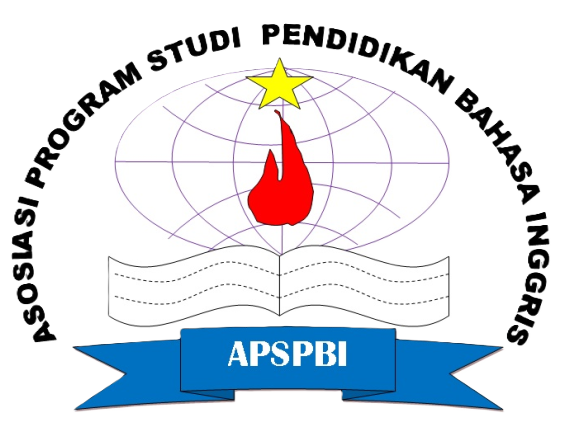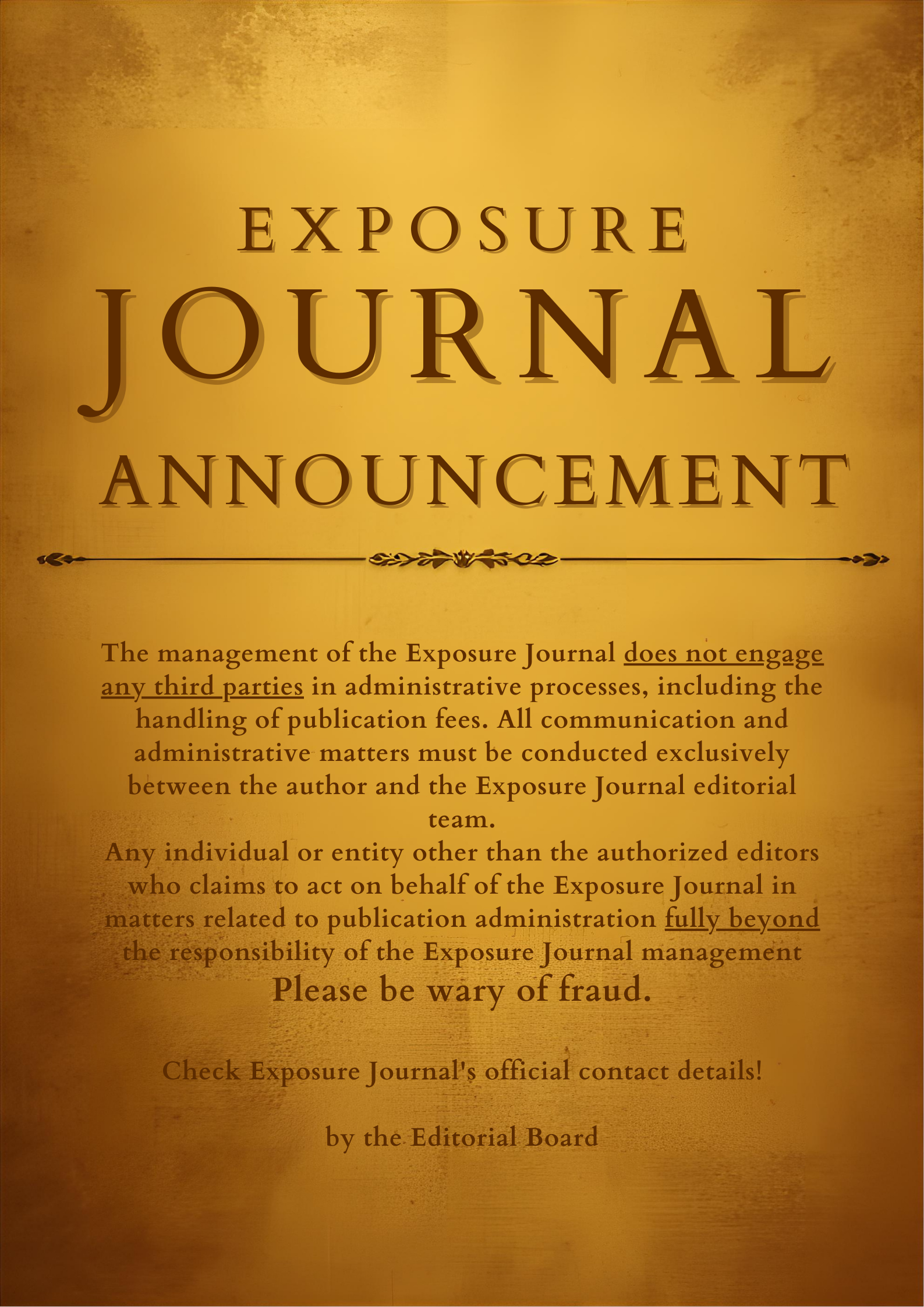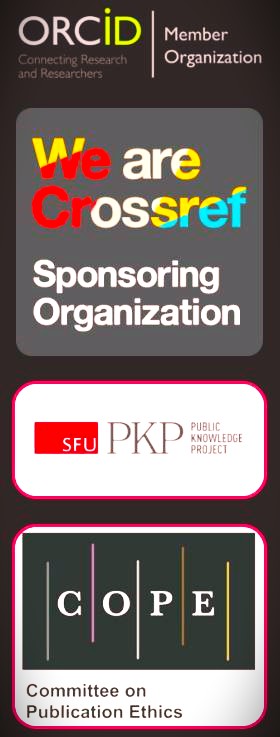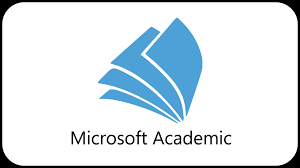Learning Strategies Used By The Students Of English Department Of Tarbiyah Faculty At STAIN Palopo
DOI: https://doi.org/10.26618/exposure.v6i2.862
Learning Strategies, quantitative method, metacognitive strategies, memory strategies, cognitive strategies
Abstract
Abstract
The objectives of this research were: (1) to find out of the six learning strategies, which learning strategies applied by high achievers of English Department of Tarbiyah Faculty at STAIN Palopo; (2) to find out the most frequently strategies used by the students of English Department of Tarbiyah Faculty at STAIN Palopo; (3) to find out differences between high achievers and low achievers in their learning strategies. In analyzing the data, the researcher applied quantitative method. The subject was the sixth semester students of English Department STAIN Palopo. This research used questionaire SILL as instrument. The result of the research showed that (1) the strategies applied by high achievers in memory strategy was “review English lessons”. In the cognitive strategies applied “trying to talk like native speakers‟. In the compensation strategies “using synonym in case they couldn’t think of a word”. The high achievers always or almost always used all metacognitive strategy. They applied “try to find how to be a better learner”. In affective strategy “talk to someone else about how I feel‟. In social strategy applied “ask others to speak slowly or repeat” if they do not understand something in second language. (2) Metacognitive strategies is the most frequently strategy used by sixth semester students of English Department of STAIN Palopo with mean 3.3755. (3) There is a significant different in using language learning strategies between high achievers and low achievers. The highest frequently used by high achievers is metacognitive strategies and the lowest frequently used is memory strategies. Meanwhile, the highest frequently used by low achievers is affective strategies and the lowest frequently used is memory strategies.References
Anna Uhl Chamot. 2004. Issues in Language Learning Strategy Research and Teaching. Electronic Journal of Foreign Language Teaching. Vol. 1, No. 1, (pp. 14-26.) Centre for Language Studies. National University of Singapore.
Atmowardoyo, Haryanto. 2000. Research Methods For Language And Literature Studies. Makassar. Badan penerbit UNM.
Chang, Ching-Yi & Liu, Shu-Chen & Lee, Yi-Nan. 2007. A Study of Language Learning Strategies Used by College EFL Learners in Taiwan.
Chang, S. J. and S. C. Huang. 1999. Language Learning Motivation and Language Strategies of Taiwanese EFL Students. Washington, DC: Department of Education. [ERIC: Document Reproduction Service No. ED371589].
Chen, Yueh-miao. 2005. The Learning Strategies of Taiwanese University Students: English Majors Versus Non-English Majors and Males Versus Females. Indonesian Journal of English Language Teaching, Vol. 1/no.2.
Gay, et al. 2006. Educational Research. New Jersey: Pearson Prentice Hall.
Ghadesi, M. 1998. Language Learning Strategies of Some University Students in Hong Kong. Paper presented at the 9th English in Southeast Asia Conference. Brunei.
Griffiths. 2010. Strategies of Successful Language Learners. JELS, Vol. 1, No. 3, Spring (pp.1-18).
Green, J. M., and Oxford, R. 1995. A Closer Look at Learning Strategies, L2 Proficiency, and Gender. TESOL Quarterly, 29(2), (pp. 261-297).
Larsen-Freeman, Diane, and Long, Michael H. 1991. An Introduction to Second Language Acquisition Research. New York: Longman Inc.
Mamuna. 2003. Language Learning Strategies Employed by L2 Learners. Department of English, Islamia University Bahawalpur.
Journal of Research (Faculty of Languages & Islamic Studies) Vol.4
O’Malley, J. M., Chamot, A. U., Stewner-Manzanares, G., Russo, R., & L. Küpper. 1985. Learning Strategy Applications with students of English as a Second Language. TESOL Quarterly, 19 (3), (pp. 557-584).
O’Malley, J. M. and Chamot, A. U. 1990. Learning Strategies in Second Language Acquisition. Cambridge: Cambridge University Press.
Oxford, R.L. 1990a. Language Learning Strategies and Beyond: A Look at Strategies in the Context of Styles. In S.S. Magnan (Ed.), Shifting the Instructional Focus to the Learner (pp. 35-55).
Middlebury, VT: Northeast Conference on the Teaching of Foreign Languages.
Oxford, R. L., and Crookall, D. 1989. Research on Language Learning Strategies: Method, Findings, and Instructional Issues. Modern Language Journal, 73, (pp. 404-419).
Oxford, R. and M. Nyikos. 1989. Variables Affecting Choice of Language Learning Strategies by University Students. Modern Language Journal, 73, (pp. 291-300).
Peacock, M. and B. Ho. 2003. Students Language Learning Strategies Across Eight Disciplines. International Journal of Applied Linguistic, 13, (pp. 179-200).
Rahimi, Riazi and Saif. 2004. An Investigation into the Factors Affecting the Use of Language Learning Strategies By Persian EFL Learners. RCLA. CJAL Journal, 11, (pp.31-60).
Rubin, J. 1987. Learner Strategies: Theoretical Assumptions, Research History and Typology. In A. Wenden and J. Rubin (Eds.), Learner Strategies and Language Learning. (pp. 15-29).
Englewood Cliffs, New Jersey: Prentice Hall.
Rubin, J. W. 1975. What the ‘Good Language Learner’ Can Teach Us. TESOL Quartely, 9, (pp.41-51).
Rubin, and Wenden, A. 1987. Learner Strategies in Language Learning. Englewood Cliffs: Prentice Hall.
Rubin, J., and Thompson, I. 1982. How to be a More Successful Language Learner. Boston: Heinle & Heinle.
Downloads
Published
How to Cite
Issue
Section
License
Authors who publish with this journal agree to the following terms:
In order to assure the highest standards for published articles, a peer review policy is applied. In pursue of the compliance with academic standards, all parties involved in the publishing process (the authors, the editors and the editorial board and the reviewers) agree to meet the responsibilities stated below in accordance to the Journal publication ethics and malpractice statement.
Duties of Authors:
- The author(s) warrant that the submitted article is an original work, which has not been previously published, and that they have obtained an agreement from any co-author(s) prior to the manuscript’s submission;
- The author(s) should not submit articles describing essentially the same research to more than one journal;
- The authors(s) make certain that the manuscript meets the terms of the Manuscript Submission Guideline regarding appropriate academic citation and that no copyright infringement occurs;
- The authors(s) should inform the editors about any conflict of interests and report any errors they subsequently, discover in their manuscript.
Duties of Editors and the Editorial Board:
- The editors, together with the editorial board, are responsible for deciding upon the publication or rejection of the submitted manuscripts based only on their originality, significance, and relevance to the domains of the journal;
- The editors evaluate the manuscripts compliance with academic criteria, the domains of the journal and the guidelines;
- The editors must at all times respect the confidentiality of any information pertaining to the submitted manuscripts;
- The editors assign the review of each manuscript to two reviewers chosen according to their domains of expertise. The editors must take into account any conflict of interest reported by the authors and the reviewers.
- The editors must ensure that the comments and recommendations of the reviewers are sent to the author(s) in due time and that the manuscripts are returned to the editors, who take the final decision to publish them or not.
Authors are permitted and encouraged to post online a pre-publication manuscript (but not the Publisher’s final formatted PDF version of the Work) in institutional repositories or on their Websites prior to and during the submission process, as it can lead to productive exchanges, as well as earlier and greater citation of published work (see The Effect of Open Access). Any such posting made before acceptance and publication of the Work shall be updated upon publication to include a reference to the Publisher-assigned DOI (Digital Object Identifier) and a link to the online abstract for the final published Work in the Journal.














